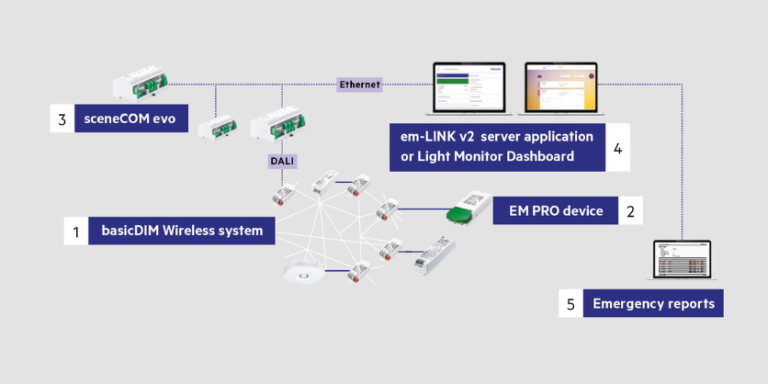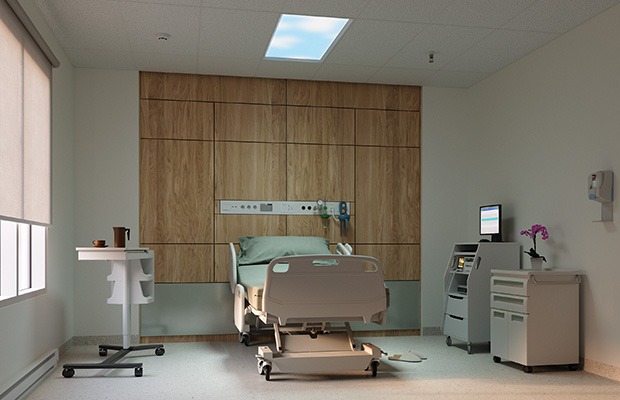7 Ways Lighting in Educational Settings Can Have A Significant Impact on Students’ Behavioral Health
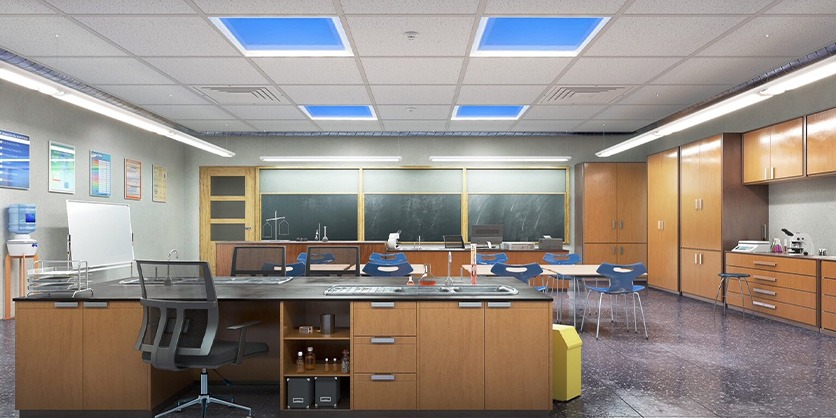
By Mark Jenzen
Lighting in educational settings can have a significant impact on students’ behavioral health and overall well-being.
Here are some ways in which different types of lighting can influence students both positively and negatively. As you will see, natural light is the best option, but what if your classroom or budget does not allow natural lighting? What type of lighting can architects, school superintendents, and teachers install in the educational environment that mimic natural light precisely in both lighting output specifications and appearance?
1. Mood and Emotions
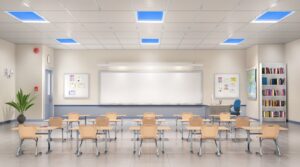
Natural Light: Exposure to natural light has been linked to improved mood and reduced stress. Daylight helps regulate circadian rhythms, which can positively affect students’ emotional well-being.
Commercial Lighting: Harsh or inadequate artificial lighting, on the other hand, may contribute to feelings of fatigue, irritability, and even symptoms of depression.
2. Concentration and Focus
Natural Light: Adequate natural light supports better concentration and focus. Exposure to natural light has been associated with enhanced cognitive performance and increased productivity.
Commercial Lighting: Poor artificial lighting, especially if it creates glare or flickering, can lead to eyestrain, headaches, and difficulty concentrating.
3. Circadian Rhythms
Natural Light: Exposure to natural light helps regulate circadian rhythms, promoting healthy sleep-wake cycles. Disruptions to these rhythms, such as insufficient exposure to natural light, can contribute to sleep problems and mood disorders.
Commercial Lighting: Inconsistent or inappropriate lighting, especially in the evening, can disrupt circadian rhythms and interfere with students’ sleep patterns.
4. Behavioral Issues
Natural Light: Ample natural light positively correlates with improved behavior, as it can contribute to a more positive and calm learning environment.
Commercial Lighting: Poor lighting conditions, such as dim or flickering lights, may contribute to restlessness and difficulty in maintaining attention, potentially leading to behavioral issues.
5. Physical Health
Natural Light: Exposure to natural light supports the production of vitamin D, which is crucial for overall health. Additionally, natural light has been associated with better physical health and well-being.
Commercial Lighting: Inadequate lighting may contribute to sedentary behavior, as poor lighting conditions can discourage physical activity.
6. Educational Environment

Natural Light: Classrooms with good natural lighting are generally perceived as more positive and conducive to learning.
Commercial Lighting: Poorly lit classrooms may create a dreary atmosphere, impacting students’ motivation and engagement.
7. Eye Health
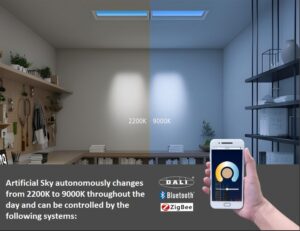
Natural Light: Adequate natural light can reduce the risk of eye strain and discomfort.
Commercial Lighting: Inappropriate artificial lighting, such as overly bright or dim lighting, may contribute to eye fatigue and discomfort.
To create a positive learning environment, educational institutions should consider incorporating elements of natural light, ensuring proper artificial lighting, and being mindful of the overall lighting design within classrooms and study spaces. Adjusting lighting based on the time of day and the specific needs of students can contribute to their overall behavioral health and well-being. Currently, the only classroom lighting system on the market that not only mimics the true changing properties of sunlight but the actual view as well is Artificial Sky.
Using nanotechnology and advanced optics engineering, Artificial Sky can reproduce the atmospheric wonder known as Rayleigh Scattering and create an infinite blue sky. Additionally, the new Artificial Skylights can autonomously change both color temp and intensity throughout the day to mimic the exact pattern of sunlight in that geographical location as well.
The largest-ever study on light exposure with over 85,000 participants, proves its impact on mental health and can be viewed here: Day and night light exposure are associated with psychiatric disorders: an objective light study in >85,000 people | Nature Mental Health. For more information on educational benefits or to schedule a meeting please visit artificialsky.com
More information available here




